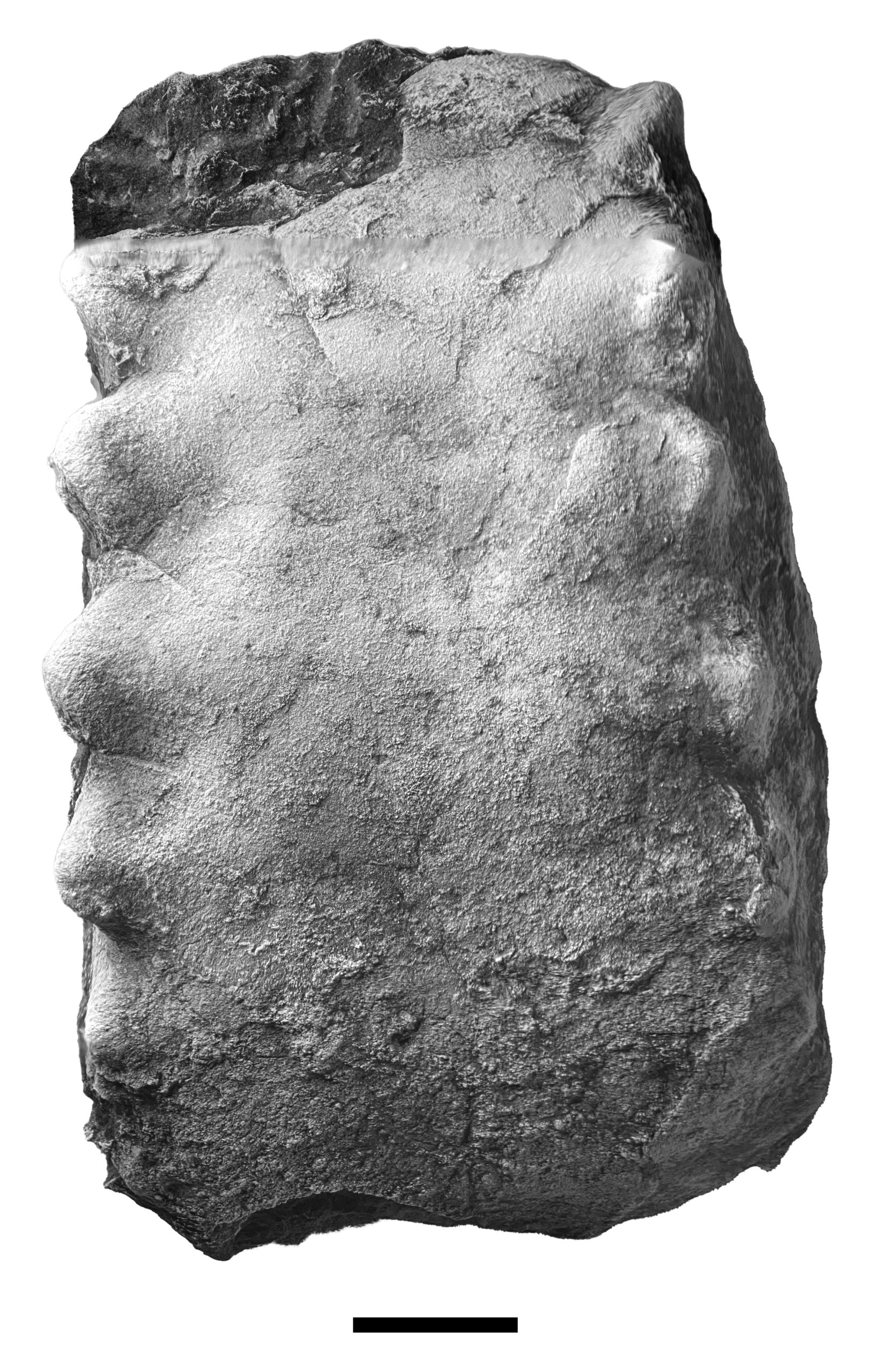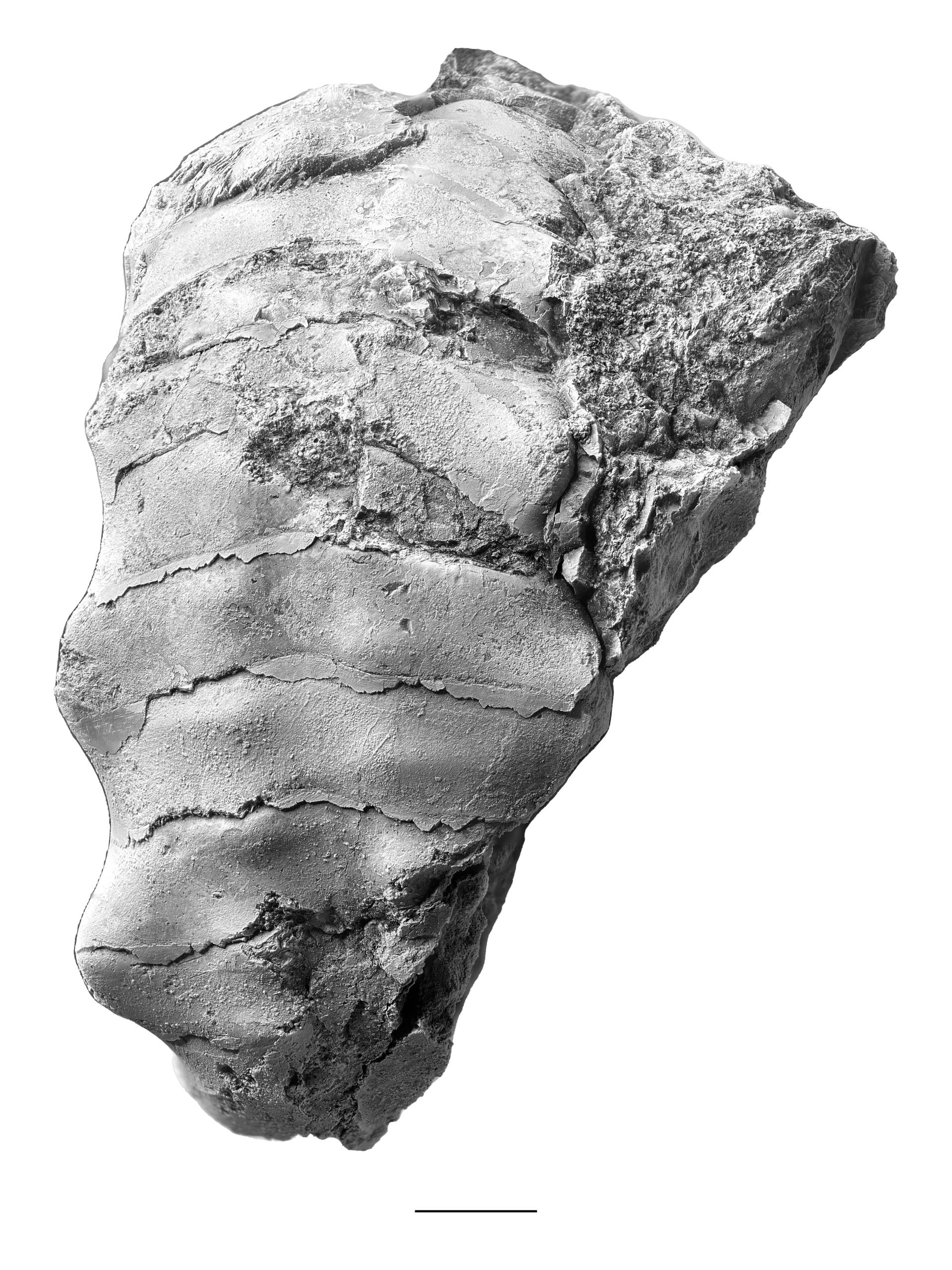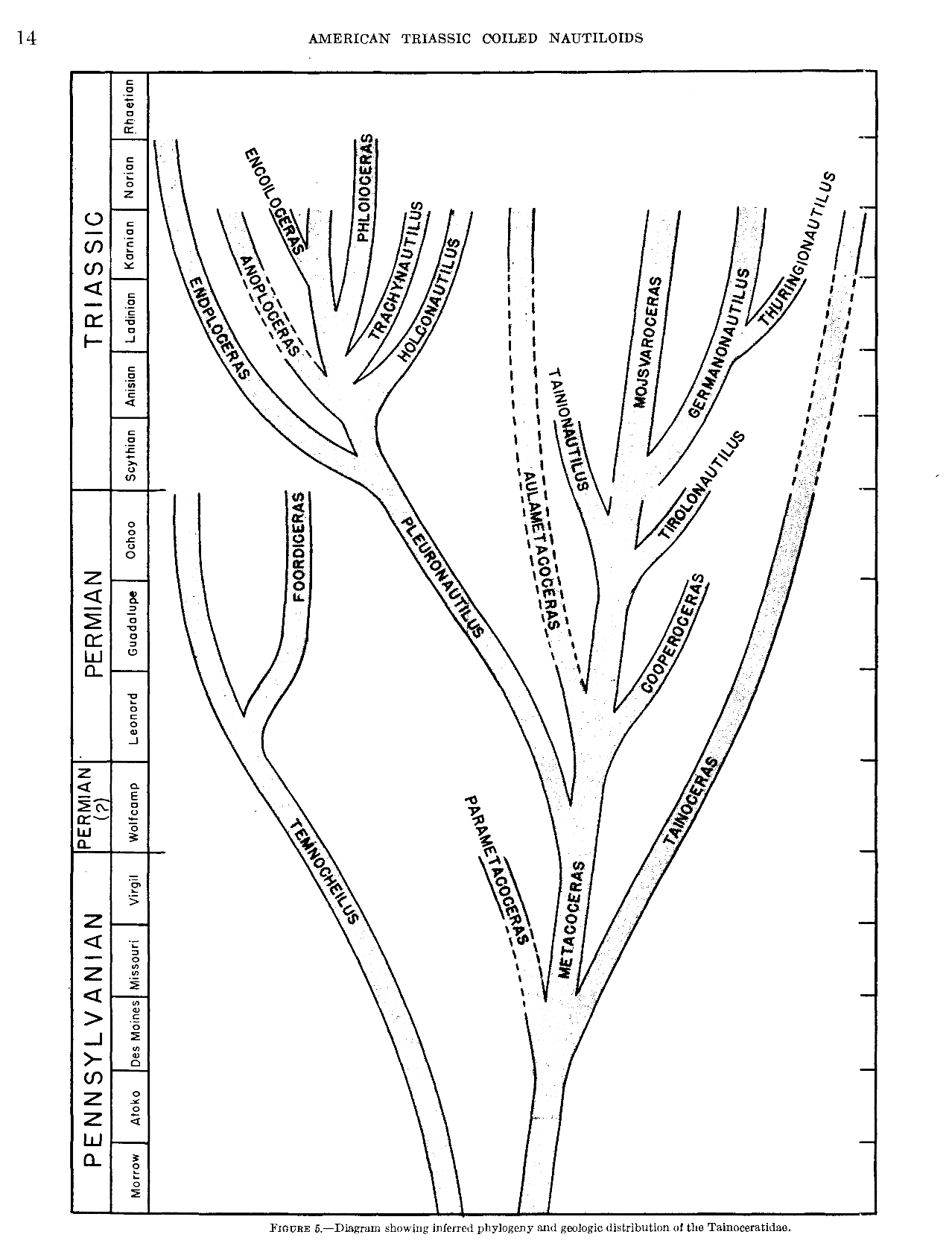The coiled cephalopod Tainoceras (Hyatt, 1883) has eluded me for years. They are missing for a good reason: the rocks I pull specimens from are too old to have them. Most coiled cephalopods I pull out of the rocks are from the genus Metacoceras (Hyatt, 1883), which compete with Pseudorthoceras (Girty, 1911) for the title “most abundant cephalopod.”

The Coiled Cephalopod, Metacoceras
Metacoceras is crowded with species. Sturgeon et al. (1997) said of the group, “a thorough restudy and evaluation of the genus and its species are in order” and that “Metacoceras has more species than any other genus of Pennsylvanian and Permian coiled nautiloids.” Kummel (1964) discussed the treatment of ornamentation as a species divider in Metacoceras and wrote that the division of species using this trait is questionable and that using it to divide genera is unrealistic. Some authors attempted to categorize groups based on the morphology of the first volution (juvenile). Yet, Kummel felt that distinction based on this needed to be more reliable due to several environmental factors that could alter said morphology.
Enter Tainoceras and Kummel’s Work
Kemmel (1953) shows Tainoceras as a descendant of Metacoceras. They are almost Metacoceras, yet possess a pair of ventral longitudinal nodes with a median ventral sulcus in between them. When the sea laid down the Nadine Limestone (=Cambridge Limestone outside of PA), it brought abundant Metacoceras. Nautiloids dominated the waters that deposited the Glenshaw Formation rocks. Ice locked up ocean waters as the Earth cooled and the sea receded. Sometime later, the Earth warmed, and the ice melted as it was prone to do in cycles during the Late Pennsylvanian. As the waters that would one day form the Portersville Limestone flooded back into the basin, they brought a new cephalopod, Tainoceras.
And that is where I found my first Tainoceras, in the rocks of the Portersville Limestone in West Virginia. I collected the specimen a few months before I identified it. I thought it looked like another Metacoceras and threw it into the cephalopod bin. Just last week, I took a closer look and behold a pair of repeating nodes on the venter. The decedent of Metacoceras was in my hands at last.
An Evolution Story About Tainoceras, Perhaps
⊙ While scientists can look at shells and infer genetic relationships, we can’t look at the DNA to be sure today. The following story is an educated guess based on many morphological scientific studies.
At some point during the low sea levels, a genetic mutation likely gave a Metacoceras an extra pair of nodes. The creatures with extra nodes may have had stronger shells and survived more attacks. Or the nodes may have made them better swimmers. They didn’t outcompete their contemporaries but did continue in the fossil record into the Triassic Period. Mojsvaroceras eventually replaced Metacoceras in the Triassic. As the Paleozoic Period ended, Nautaloid populations would soon be overshadowed by ammonoids.
References
- Hyatt, A., 1883, Proceedings of the Boston Society of Natural History V. 22, Genera of Fossil Cephalopods, Boston Society of Natural History, pp. 268–269
- Kummel, B., 1953, American Triassic Coiled Nautiloids, In Professional Paper. US Geological Survey, pp. 1–104
- Kummel, B., 1964, Nautiloidea-Nautilida, p. K383-K466. In R. C. Moore (ed.). Treatise on Invertebrate Paleontology, Part K, Mollusca 3. Geol. Soc. Am. and Univ. Kans. Press, Lawrence.
- Miller, Unklesbay, 1942, The Cephalopod Fauna of the Conemaugh series in Western Pennsylvania, Annals of the Carnegie Museum
- Miller, A.K., Unklesbay, A.G., 1947. The Cephalopod Fauna of the Conemaugh Series in Western Pennsylvania: Supplement, Annals of the Carnegie Museum, v. 30, pp. 319–330
- Sturgeon M.T. et al, 1997, Pennsylvanian Cephalopods of Ohio, Part 1 Nautiloid and Bactritoid Cehphalopods, pp. 26–28, pp. 98–99



